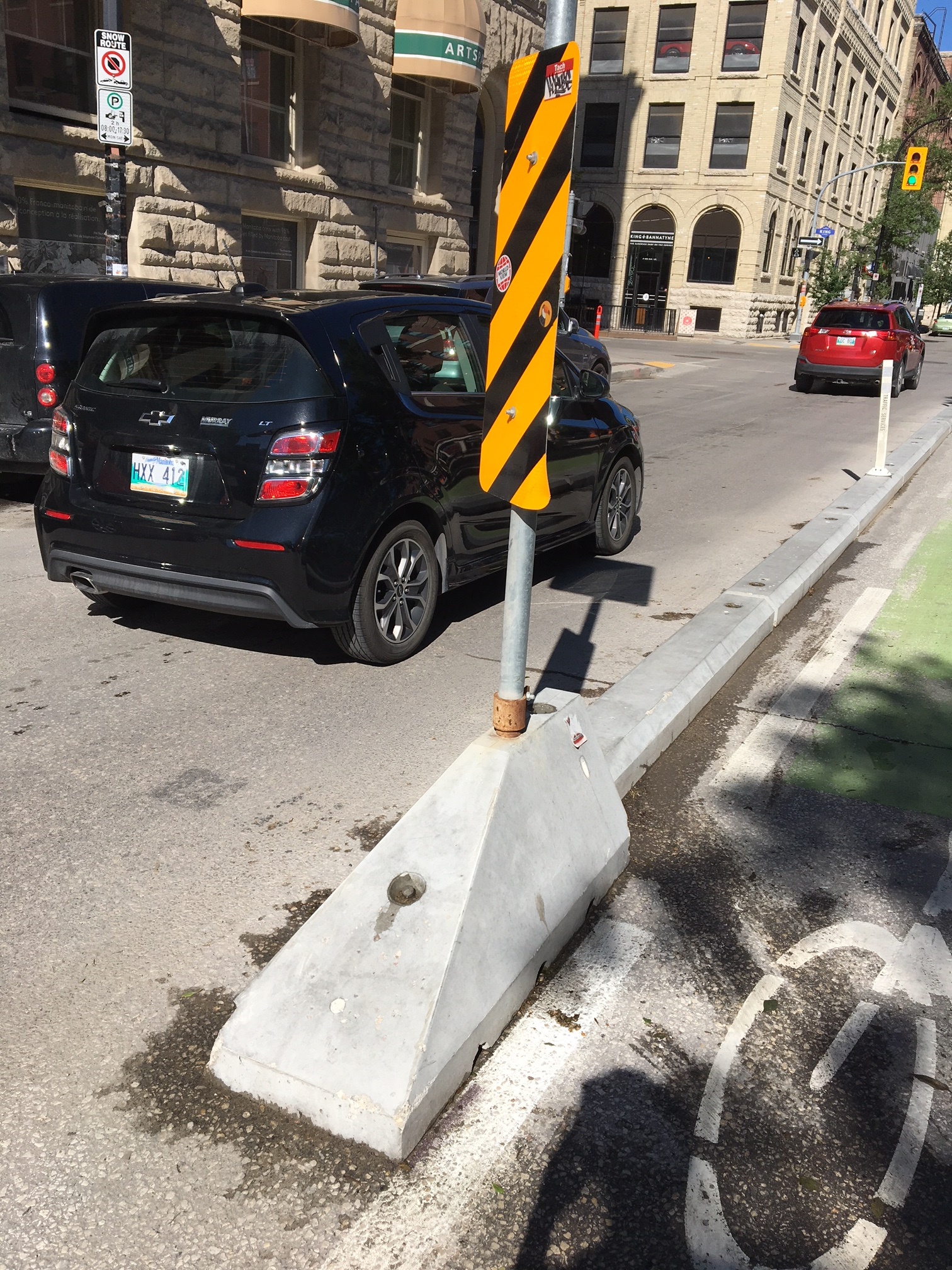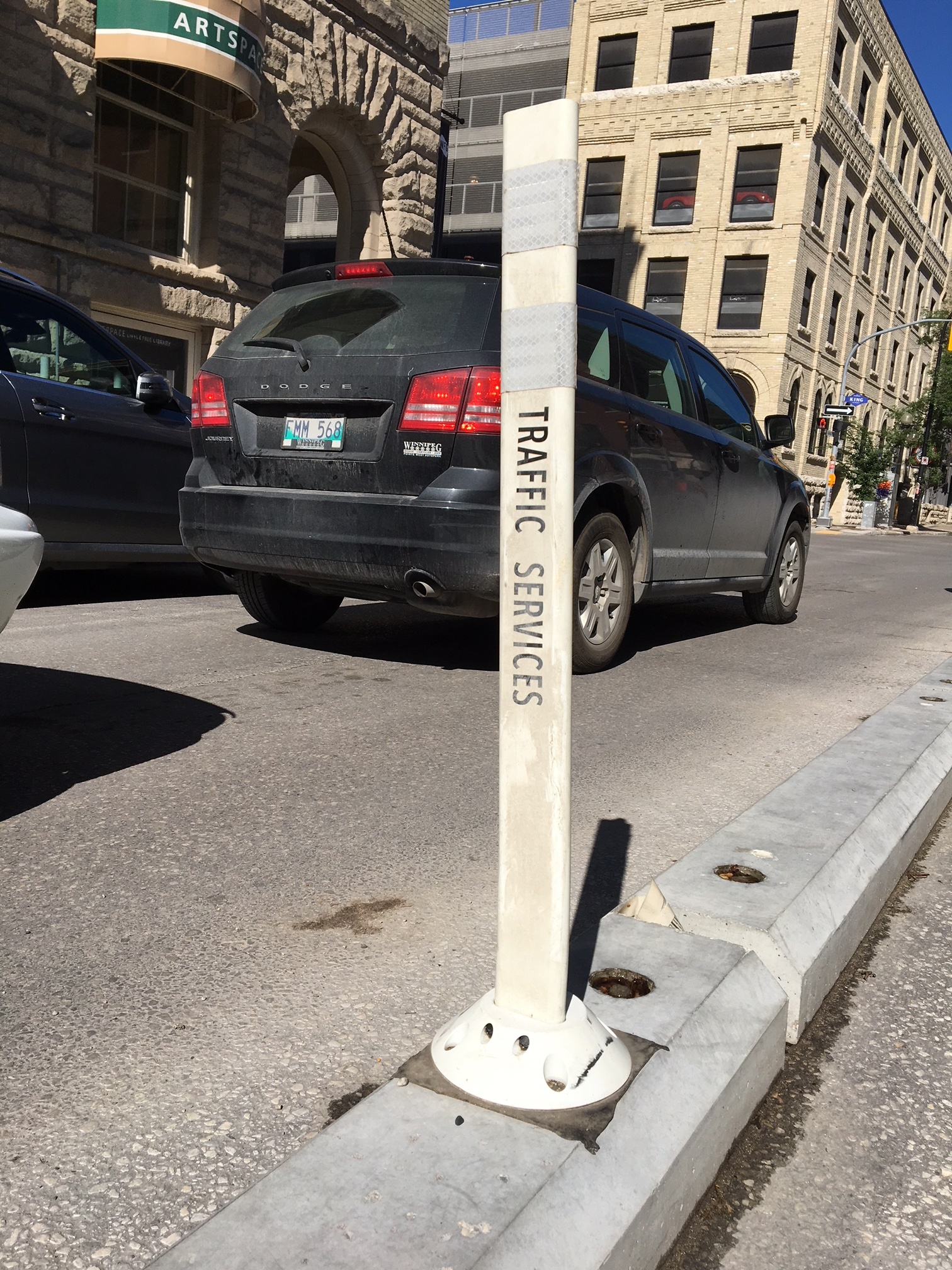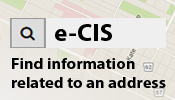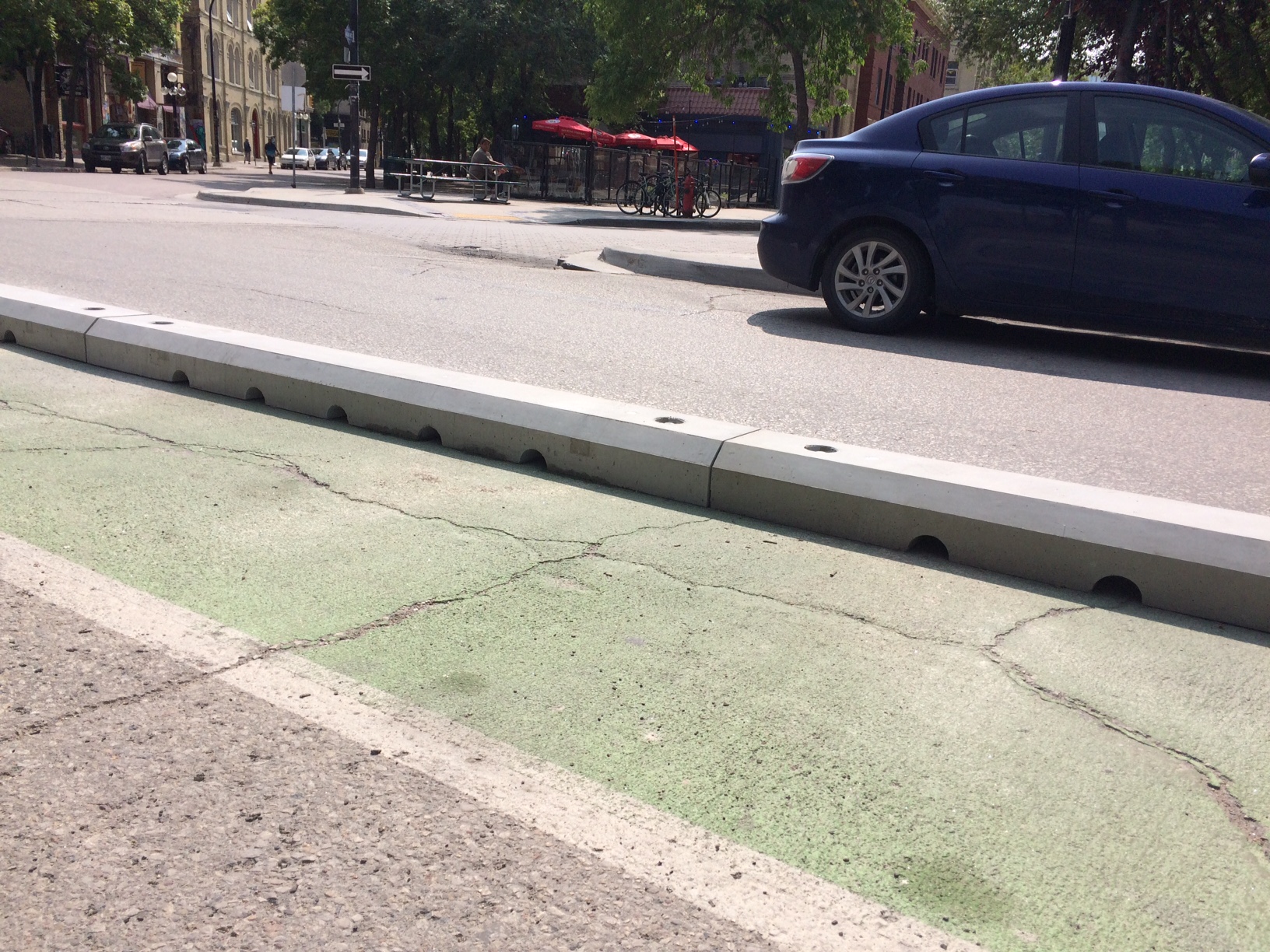Holiday season – View holiday hours for City of Winnipeg facilities and services from December 24 to January 1.

Adjustable Bike Lane Curbs
Update July 2018 - The pilot is complete. Visit the Findings & Adjustments tab for more information about pilot results and next steps in implementing adjustable bike lane curbs beyond the pilot.
Starting the week of August 21, 2017, the City of Winnipeg ran a nine-month technical trial of adjustable bike lane curbs on existing bike lanes. The trial included testing installation methods, monitoring maintenance including snow clearing and spring clean-up, and comfort level of users. The goal of the trial was to explore the feasibility of adjustable bike lane curbs as a method for deploying protected bike lanes. Adjustable bike lane curbs will allow the City to install protected bike lanes, while still being able to adjust the design of the lane if necessary to accommodate feedback from users and other stakeholders, as well as future changes in use of the roadway.
The curb trials were installed on existing bike lanes at:
- Sherbrook Street south of Cumberland Avenue;
- Bannatyne Avenue between King Street and Albert Street.
- Background
- Engage
- Findings & Adjustments
- Documents
- FAQs
- Maps
Background
The City evaluated two types of adjustable curbs as part of this pilot project to observe which performed better.
Engage
The City continues to collect public feedback on adjustable curbs through contact with 311. The transportation division will monitor the new infrastructure on a continual basis through quarterly inspections as the seasons change. The use of both public feedback and technical analysis will be used to inform the design of the permanent infrastructure to be constructed at the time of the future street renewal.
A public engagement report is now available under the documents tab. Thank you to the 347 people who provided feedback through an online survey available on this project page between August 21, 2017 and June 1, 2018.
The survey heard from 107 people who came across the pilot project while driving, 209 who came across the project while biking, and 31 people who came across the project while walking.
In both pilot locations (Sherbrook Street and Bannatyne Avenue), respondents using all modes of transportation (driving, cycling, and walking) expressed increased comfort when passing through areas with adjustable curbs.
Further analysis of what we heard and how it was considered is now available in a public engagement report under the documents tab.
Findings & Adjustments
Installation:
Installation confirmed that these adjustable bike lane curbs will allow the City to install protected bike lanes more quickly, while still being able to adjust the design of the lane to accommodate feedback from users and stakeholders, as well as future changes in land use and use of the roadway.
Curb Design:
Two curb types were tested for drainage and durability (more information available in the background tab), one with drainage channels within the curb structure and one that is a solid curb, spaced to accommodate drainage between curbs. The preferred curb includes drainage channels. Based on the trial findings, the City has made slight modifications to the shape of the curb to include a 50mm angled cut at the ends of each unit. This design modification improves on the durability of the curbs.

Maintenance:
During the pilot of the adjustable bike lanes, Winnipeg experienced a snow event that had 25cm of snowfall accumulation that buried the curbs. As a result, the plow crew had difficulty locating this infrastructure at the Sherbrook Street trial location, and the adjustable curb was damaged. The City's practice has been to remove polyposts during winter months so that they do not get damaged. Posts remained adhered to the curbs for the duration of the trial at the Bannatyne Avenue location and the curbs were not damaged during the heavy snow event.
As a winter city we are always monitoring new inventory related to our snow clearing operations. For future installations, we will make adjustments to the current method of installation to improve the curb visibility during snow events and ensure that deployment is consistent throughout the cycling infrastructure. Major intersections will include bullnoses with signage to enable the maintenance crew to see where the adjustable curbs begin. Improved visibility of the curbs during heavy snow conditions will require polyposts to be installed with the curbs. The polyposts will be installed consistently and maintained year round where adjustable curbs are installed.

Comfort level of users:
The survey heard from 107 people who came across the pilot project while driving, 209 who came across the project while biking, and 31 people who came across the project while walking.
In both pilot locations (Sherbrook Street and Bannatyne Avenue), respondents using all modes of transportation (driving, cycling and walking) expressed increased comfort when passing through areas with adjustable curbs.
Further analysis of what we heard and how it was considered is now available in a public engagement report under the documents tab.
Next Steps:
The City has gathered feedback for consideration and incorporation in future projects where adjustable methods of protected bike lanes will be studied, designed and implemented. Findings from the technical trial informed adjustments to the design of the pre-cast curb units and the ongoing maintenance of the protected cycling infrastructure using pre-cast curbs.
In 2018, the City's West Alexander to East Exchange Corridor project will incorporate adjustable bike lane curbs. More information about the project is available on the project webpage. The City will continue to collect feedback from stakeholders and the public so that ongoing adjustments can be made as necessary.
Feedback can be sent to 311.
Documents
| Document Name | Date | Type |
|---|---|---|
| Public Engagement Report | 2018-05-28 | Report |




